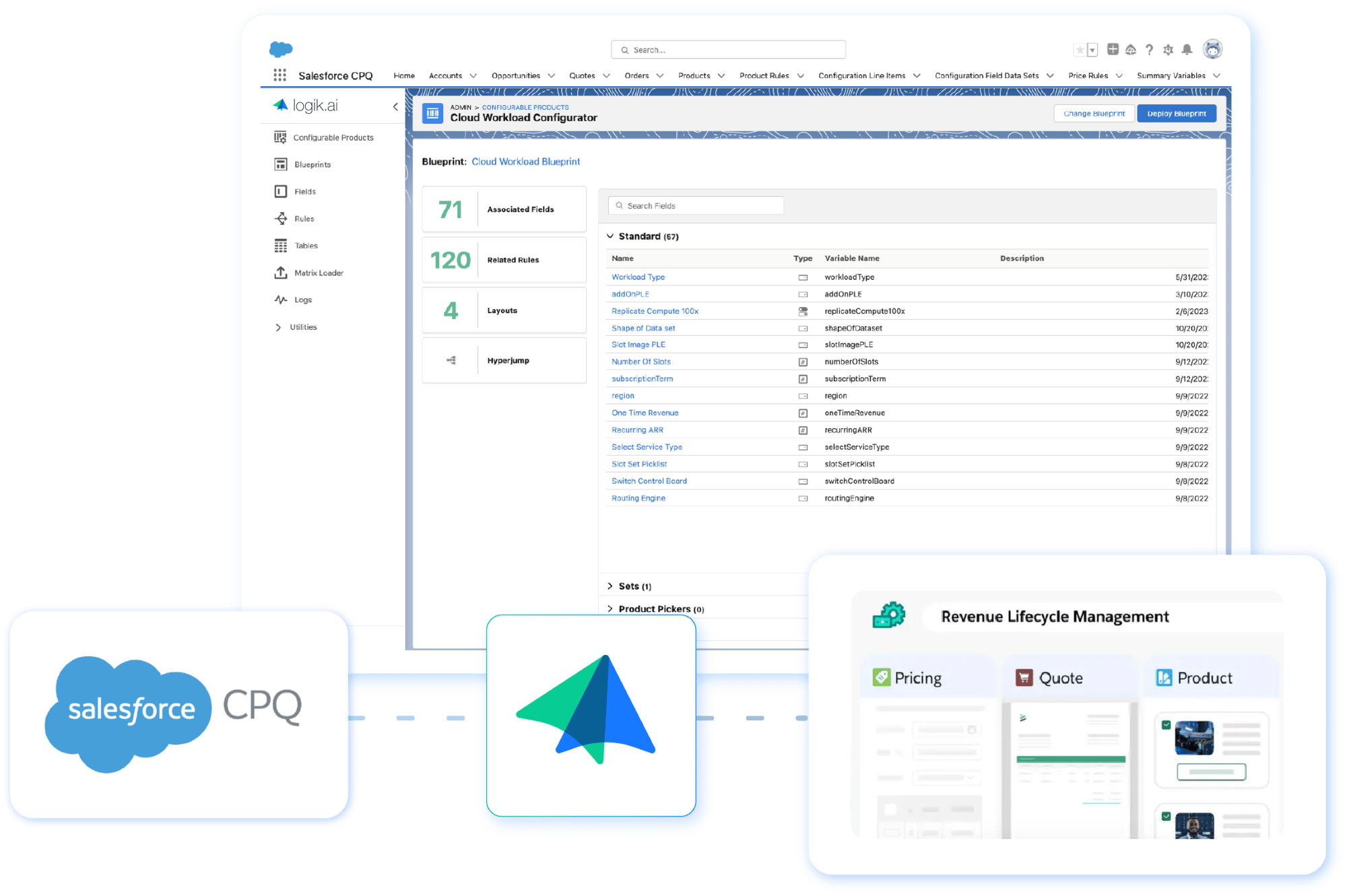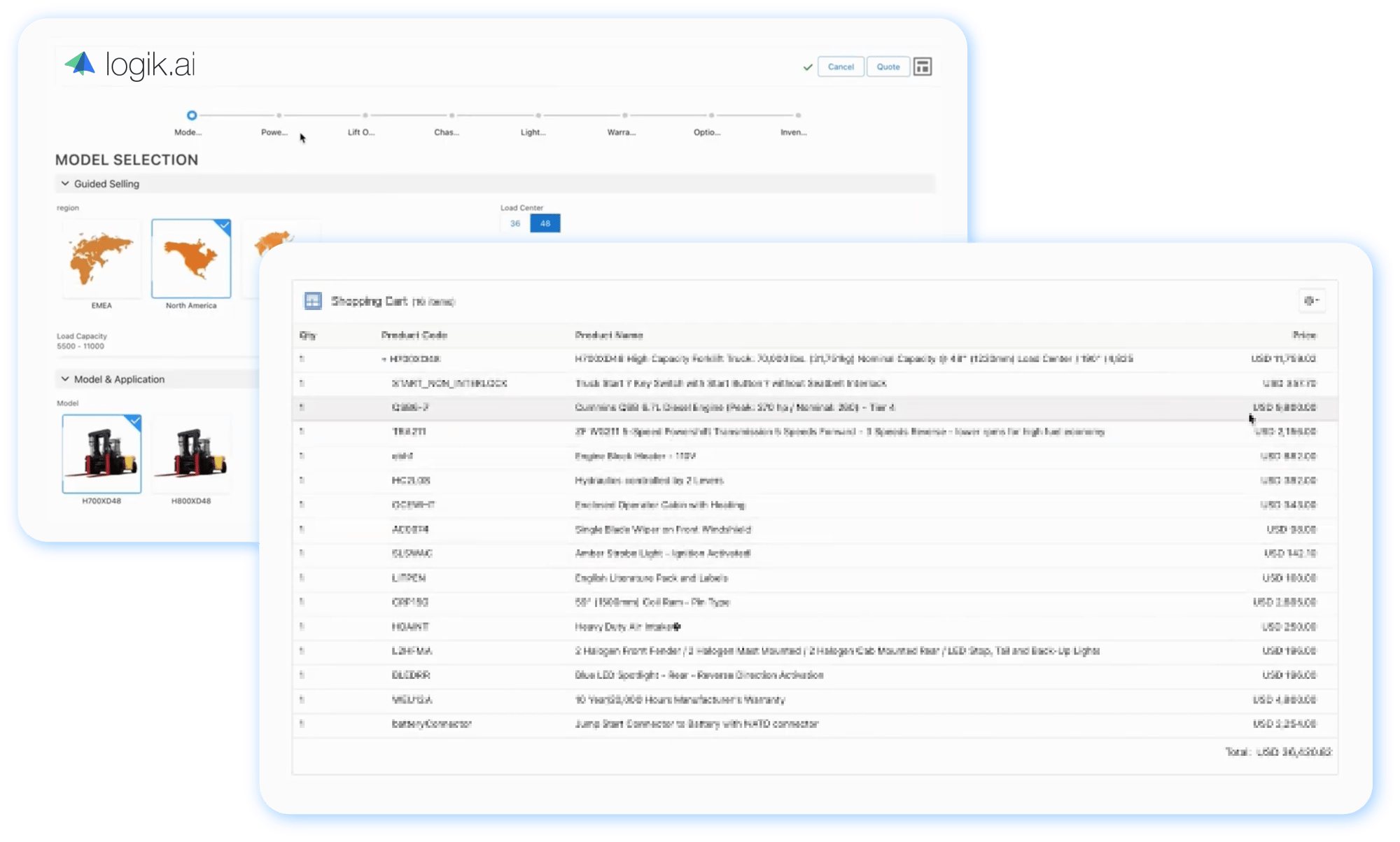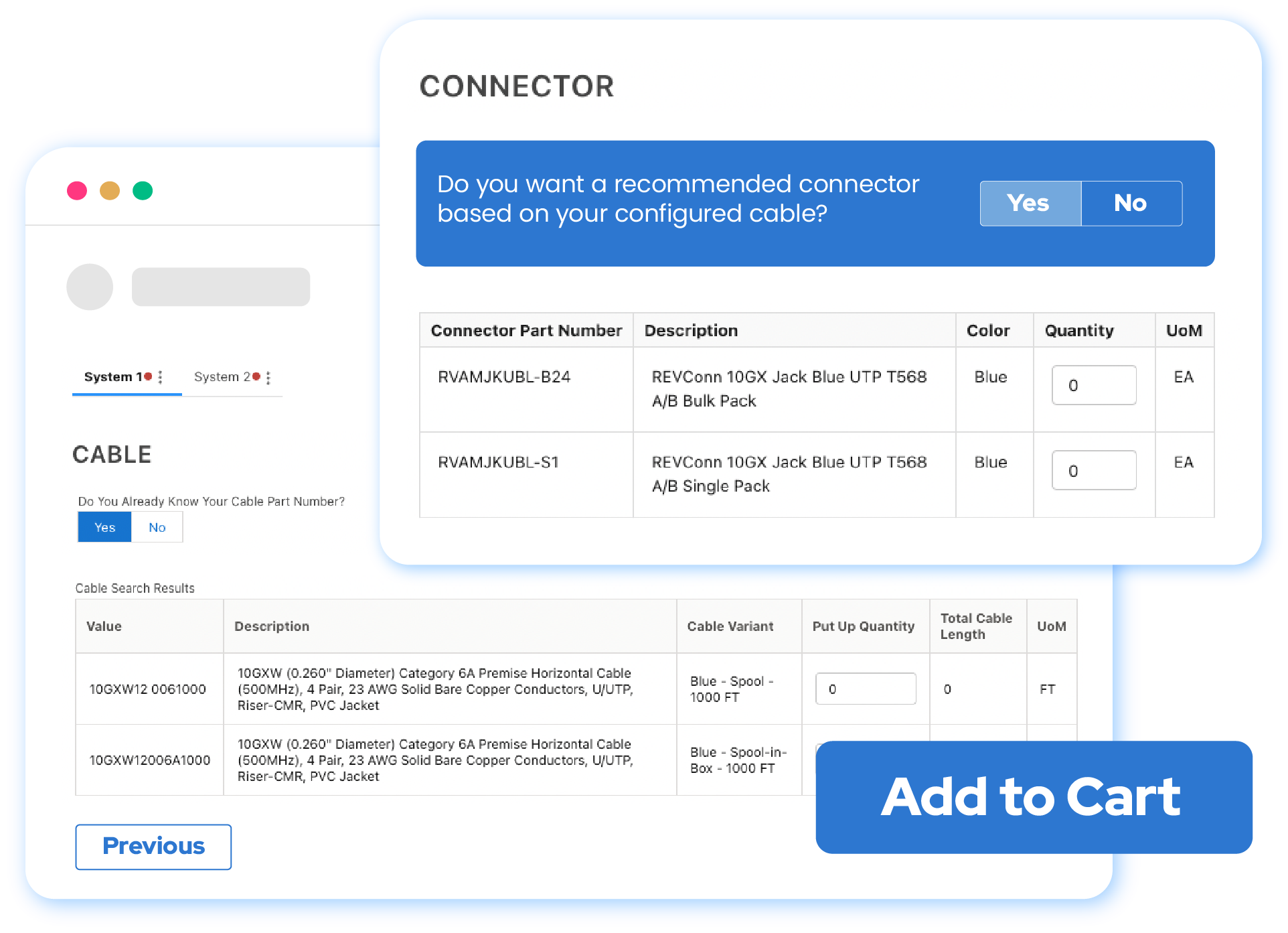Enterprise-Grade CPQ On SALESFORCE
Sell more, faster on Salesforce
Enhance your Salesforce tech stack with a CPQ built for selling complex products and services, omnichannel challenges, and complicated sales motions.

Spend less time managing a system and more time closing deals
Always Performant
Built to handle any level of product, sales, or rules complexity, our proprietary solving engine can easily configure any complex product or service and supports a high volume of attributes and BOMs without slowing down.
No Code Administration
Friction-free for business admins and non-technical users. A point-and-click user experience makes our platform easy for anyone to use and AI-driven task support frees up your admins to focus on work that requires expertise—not just extra hands.
Enterprise-Grade Capabilities
A best-in-class, API-first, and completely composable platform. Whether it’s access to our API or automated pricing calculations, our platform was purpose-built to eliminate CPQ limitations and integrate seamlessly into an enterprise tech stack.
A NOTE ON THE SERVICENOW ACQUISITION
Continued cooperation with Salesforce
Salesforce is a trusted partner of Logik.ai, and we remain dedicated to supporting our shared customers. Our standalone CPQ and advanced configurator will continue to seamlessly integrate with Salesforce CRM, Salesforce CPQ (Steelbrick), RLM/RCA, and Commerce Cloud. We plan to maintain our ISV partnership status and are actively growing our team of Salesforce developers and engineers to further strengthen and expand our integration with the Salesforce ecosystem.
FOR EVERY SELLING CHANNEL
AI-Powered, End-to-End CPQ for Omnichannel Selling
AI-guided selling, flexible management of pricing and agreements, and smart automations to speed up the QTC cycle, ensures sales teams spend less time managing a system and more time closing deals.
Configure any product for any deal, no matter how complex by embedding the expertise of your best salesperson and product expert into a modern, AI-guided selling experience.
Control the sale of any product or service across channels and manage pricing, agreements, and subscriptions in a single system.
Sell more, faster with Logik AI and smart automations, speeding up every interaction with our platform and giving you time back for the work that matters most.


FOR ECOMMERCE
The World’s Most Powerful Configurator for eCommerce
With light speed performance and first-to-market AI innovation, you can enable personalized and powerful self-service experiences that delight buyers, simplify high-touch sales motions, and reduce the total cost of sale.
Native experiences supports seamless integration with your eCommerce platform so that every part of the online buying experience looks and feels consistent.
Dynamic discovery offers intelligent and intuitive ways for customers to explore and evaluate products independently.
Guided configuration ensures personalized, perfect-fit products and services that drive conversion and customer satisfaction.